There’s no guarantee on who might visit your website, which means you need to cater to all eventualities. Language is one of the more obvious factors when it comes to providing an inclusive and adaptable User Experience (UX). The right kind of Content Management System (CMS) is crucial—and a multilingual CMS is a necessity, not a luxury. Choosing the right tool to expand your reach and engage with a diverse, international audience can be complex though.
As such, I’ll help you pick the freshest fruit from the tree and find the right multilingual CMS for you. The first step is to consider what a CMS should do for you, and the functionality you should look for.
The Benefits of Using a Multilingual CMS
A CMS lets you create, manage, and modify your content often without the need for technical know-how. Its User Interface (UI) gives you a quick and painless way to create content, store assets, and publish fast.
Depending on the solution you look at, you can edit page templates, manage user roles and permissions, implement Search Engine Optimization (SEO), and scale your offering with relative ease. Around 70 percent of sites use a CMS, so many like the benefits this technology brings:
- Usability. A CMS will offer an intuitive interface, which lets you get on with creating and editing content without the need for coding knowledge.
- Collaboration. Multiple users can work on the same website, as a CMS will often come with a system for access controls.
- Consistency. With a robust template hierarchy and theming, you can ensure a consistent look and feel across your website.
- Expandability. A quality CMS will let you let you implement specific and dedicated functionality to extend your site’s capabilities. This is often through plugins or extensions.
On the whole, a CMS is a cost-effective and scalable way to run a website, which is why so many turn to these tools. However, a multilingual CMS takes things even further.
What Makes for a Multilingual CMS
When it comes to serving content in multiple languages, a CMS can be your go-to tool. The main difference between a multilingual CMS and the rest is how it implements language translation. For instance, you’ll have the ability to add, remove, and manage multiple languages and switch between them on the front end using a dedicated UI element.
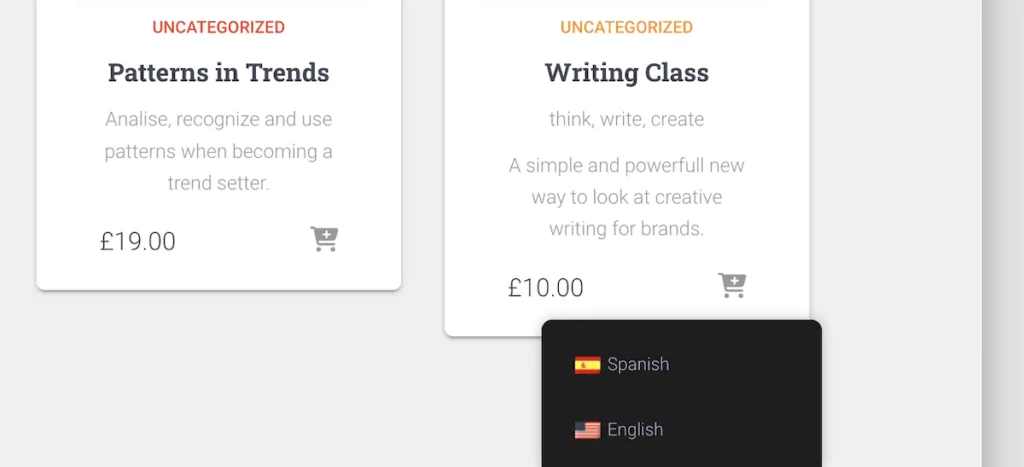
Of course, the CMS will support content translation. While it might not provide dedicated tools for this, its templating hierarchy and codebase runs with translation in mind. With the right plugin or extension, you can translate content either manually or through a third-party integration. This goes for your site’s media too.
Under the hood, you’ll often find tools and interfaces that help you create language-specific content and localized dates, currencies, and measurement units. On a technical level, a multilingual CMS will support URL localization, different character sets and writing systems, and multilingual SEO.
Let’s get into all of the functionality in greater detail next.
The Essential Features of a Multilingual CMS
Not every multilingual CMS will offer the same functionality and feature set. Even so, I’d expect quality solutions to provide you as much of the following as possible:
- The ability to handle a wide range of languages, including non-Latin scripts and RTL writing systems—along with a front-end switcher tool.
- Content consistency management across different language versions, which ensures updates in one language are reflected in others.
- Manual or automatic support for adapting content beyond translation, such as date formats, currencies, and cultural nuances.
- Flexibility in URL structures for different languages, such as subdirectories (for example, /es/ or /fr/) or subdomains (such as es.example.com or fr.example.com).
- Built-in multilingual SEO functionality, including
hreflangtags, translated metadata, and language-specific sitemaps.
In addition, you’ll want to work within an intuitive interface that simplifies the translation process, ideally with extra support for professional translation services or machine translation. All of this with excellent performance and scalability too.
How to Choose the Right Multilingual CMS for Your Needs
Selecting the right multilingual CMS needs as much care as any other decision you make about your site—potentially greater investment.
Whenever I like to make any decision, I’ll create a list of pertinent questions, then answer them. To start, I’d go through some of the basics:
- What languages do you need to support over the short- and long-term?
- What types of content do you need to manage, and which one takes priority?
- What is your budget, and does it account for additional plugins, themes, professional services, and ongoing maintenance?
- What level of technical expertise does your team have, and does your CMS consider non-technical users?
From here, you can look into areas such as scalability. Consider whether the multilingual CMS you look at can handle your expected growth in terms of content volume, traffic, and number of languages.
Also, consider how the CMS integrates with your existing tech stack if you have one. This also applies the other way too. For instance, think about whether the CMS you choose can integrate with other third-party tools and services.
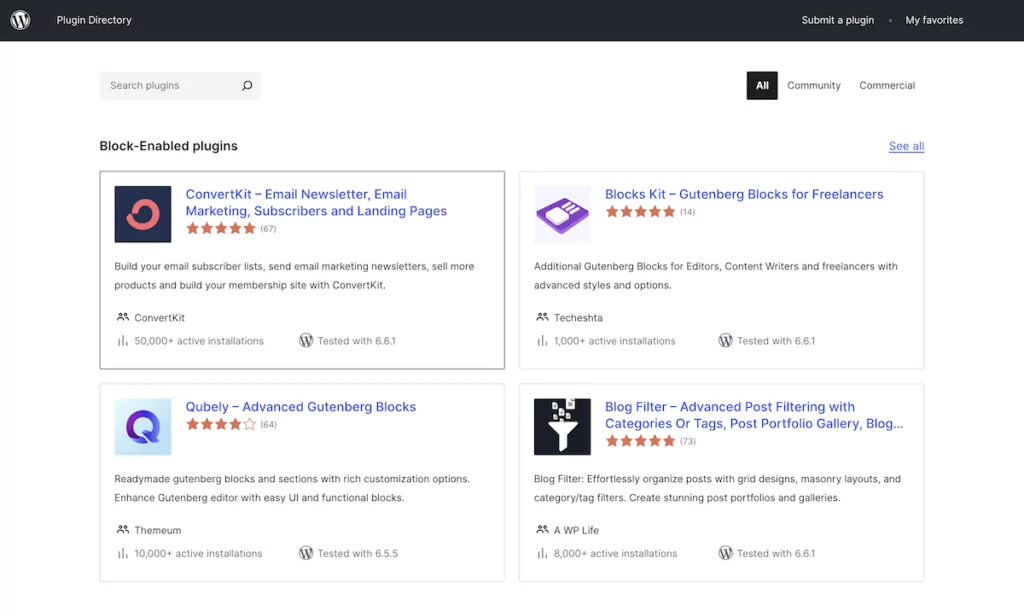
Through the answers to these questions, you’ll begin to understand what to look for in each individual multilingual CMS.
Rounding Up 5 Multilingual CMS Options
Now, let’s compare some of the leading platforms in the market. The list isn’t comprehensive, and it omits some popular platforms with translation tools (such as Squarespace) and others than don’t quite meet the standard when it comes to multilingual support (such as Ghost).
Regardless, I’m going to start with the obvious option for many users.
1. WordPress: The Versatile Contender

WordPress is the backbone for nearly 45 percent of websites, and part of that success is due to its flexibility and usability. It uses Portable Object (PO) and Machine Object (MO) files for each language, which you can edit by hand. Alongside a third-party tool such as Poedit, you have a straightforward way to work on translations and display them.
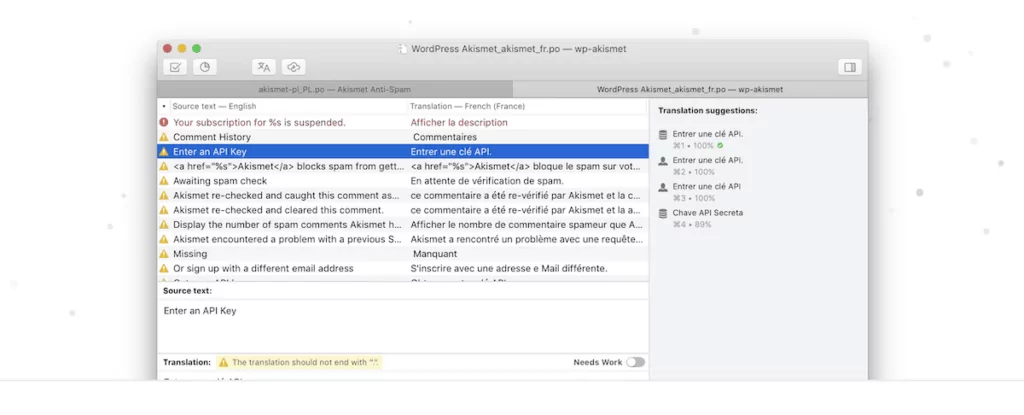
Plugins make for a better translation experience all around though. You have a better interface, more functionality, and a greater UX. TranslatePress is (naturally) the ideal way to translate your WordPress website’s content.
TranslatePress ‘fills in the blanks’ that a default WordPress installation doesn’t provide with regards to translating content:
- A visual interface. You can translate your content directly on the front-end of your site and see those changes in real-time.
- Automatic SEO implementation. The plugin adds
hreflangtags, creates multilingual sitemaps, and more without the need for your input. - Compatible with WooCommerce. You’re able to translate product pages, carts, and checkouts using the same tools as your primary content.
- Integrations with professional translation services. For even greater refinement of your translations, you can connect with experts and make your content greater.
Using a plugin such as TranslatePress, WordPress becomes an competitive option for all multilingual websites. The platform can support a wide range of languages, apply multilingual SEO, integrate with other services, and more.
Pros
- Integrates an enormous ecosystem of plugins and themes to choose from.
- Offers a high level of customization.
- Provides a user-friendly interface.
- Has a large community of users and experts, along with extensive documentation.
- Gives you excellent SEO capabilities, especially when using other plugins.
Cons
- The core multilingual functionality requires plugins.
- Your setup becomes more complex when using those multiple plugins.
- If you don’t optimize your setup, performance could suffer.
Pricing
WordPress itself is free and open-source. However, you’ll need hosting, a domain name, and a TranslatePress subscription at minimum. You could see your budget strain through the cost of premium themes and plugins too.
2. Drupal: The Powerful Polyglot

Drupal is often a CMS that developers gravitate to, due to its flexible Views architecture and its configurable underbelly. It’s also popular for its robust, core multilingual support. This makes it an excellent choice if you need an extensive language backbone out of the box. Here’s what it can offer you as a multilingual CMS:
- Language negotiation. Drupal can detect a user’s preferred language through various methods, including URL, session, browser settings, or user account preferences.
- Content translation. The platform allows for the translation of any entity, including nodes, taxonomies, and menu items.
- Configuration translation. You don’t only have to translate content. There’s the option to translate configuration elements such as field labels and system messages too.
- Interface translation. You’re able to translate the back-end admin interface, which makes it easier to collaborate with multilingual teams.
- Language-specific themes. Drupal lets you set different themes for each language you support, which enables full localization of your site’s appearance.
Drupal’s multilingual capabilities are clearly impressive, but the platform does have a steeper learning curve than other CMS options. If you come from a platform such as WordPress, some of the functionality could seem complicated at first. This is going to increase your development time (initially, anyway).
Pros
- Comes with extensive multilingual capabilities without the need for additional functionality.
- Drupal itself offers the highest security and scalability.
- If you want to build complex, large-scale websites, the platform excels.
- There’s strong support from an expert community.
Cons
- Drupal has a steep learning curve.
- The platform may be overkill for smaller websites.
- It offers fewer themes and plugins compared to WordPress.
Pricing
Much like WordPress, Drupal is free and open-source. This means your costs will go towards hosting and development.
3. Joomla!: The Multilingual Middle-Ground
Joomla! strikes a balance between WordPress and Drupal. For instance, it offers built-in multilingual capabilities that can be more comprehensive than WordPress, but not as complex as Drupal.
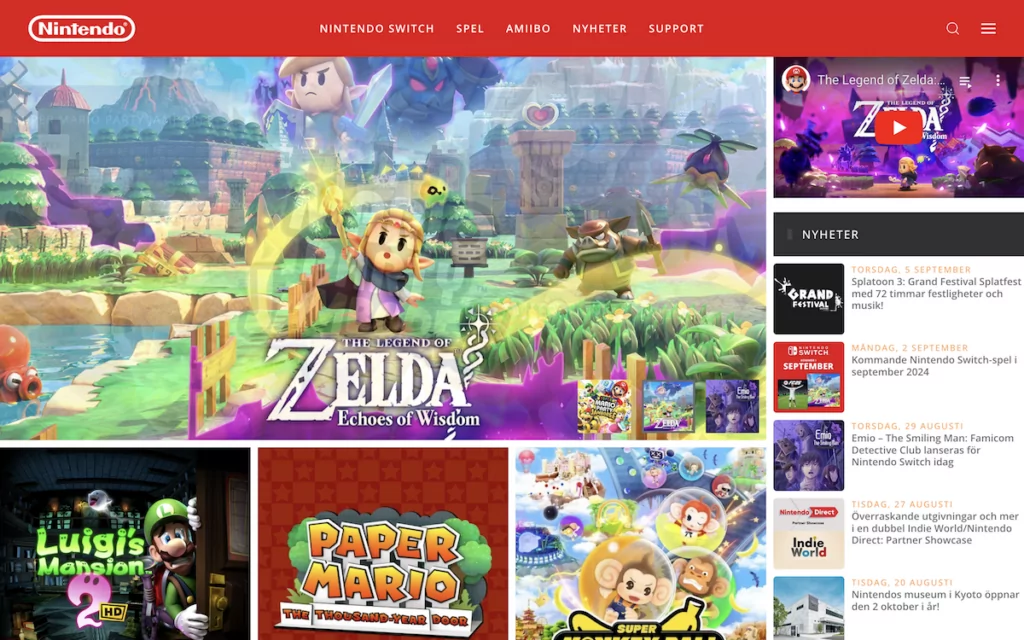
When it comes to multilingual content management, Joomla! has plenty to offer:
- Associated content. You can associate translated content items. This means you can link related content across multiple language categories, which in turn improves your SEO and site usability.
- Language switching. Rather than use a third-party solution, Joomla! includes a built-in language switcher.
- Full translation capabilities. An override system means you can translate any string, including those from extensions.
- Automated language selection. There’s functionality to automate the site language based on the user’s browser settings.
The approach Joomla! takes is going to be a great choice for medium-sized projects that require more built-in language functionality than vanilla WordPress. This is especially true if the complexity of Drupal seems enticing, yet overwhelming.
Pros
- Provides built-in multilingual support.
- Has straightforward usability, especially compared to Drupal.
- Offers an acceptable balance of features and ease of use.
Cons
- The ecosystem is not as large as WordPress (which is also true for most platforms).
- Joomla! can be less intuitive for beginners to the multilingual CMS.
- There are fewer extensions for advanced multilingual functionality.
Pricing
Again, as with WordPress and Drupal, Joomla! is free and open-source. Your budget will instead go to the related functionality and hosting.
4. Shopify: E-Commerce with Multilingual Capabilities
Shopify considers itself a multilingual CMS, although its focus is on e-commerce. It’s a platform that comes with multilingual capabilities, primarily through third-party apps. This is similar to a platform such as WordPress.
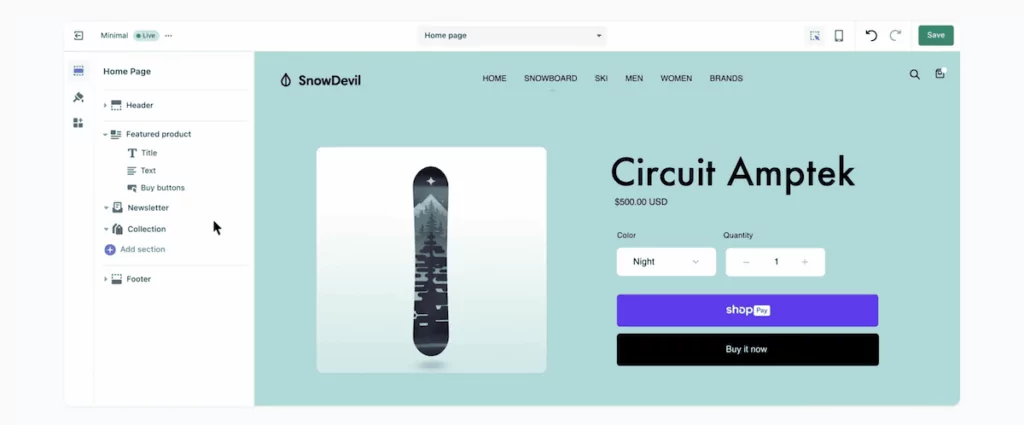
With that CMS though, you have the ability to work with .po and .mo files without the need for additional plugins, whereas this option doesn’t appear to be available with Shopify.
If you do have the right third-party tools alongside Shopify, the feature set is extensive:
- Currency conversion. You have built-in features for displaying prices in different currencies.
- Language detection. With the right app, you can implement automatic language detection based on the visitor’s location or browser settings.
- SEO. You’ll be able to implement the most important multilingual SEO settings, just like WordPress and other CMS options.
Shopify is an excellent choice for e-commerce businesses looking for an easy-to-use platform with multilingual capabilities, though you do need to purchase apps for an additional cost. This might be a prohibitive step for you.
Pros
- There’s almost no better platform for running an e-commerce store.
- The interface is clear and simple to use.
- With the reliance on third-party apps, Shopify offers robust app ecosystem to help you find the right solutions.
- When it comes to customer support, Shopify offers a high-quality provision.
Cons
- The core platform offers a limited array of multilingual capabilities.
- If you run a larger store, Shopify gets expensive fast.
- You have less flexibility in comparison to other multilingual CMS options.
Pricing
There’s no free version of Shopify, so you have to pay to become a user. This ranges from $19-250 per month. From there, you’ll also need to pay for the additional extensions that help you translate your store.
5. Wix: User-Friendly Website Builder with Multilingual Support
Wix is arguably the most ‘WordPress’ non-WordPress CMS. Plenty of small businesses or non-technical site owners come to it for simplistic building functionality that still looks good.
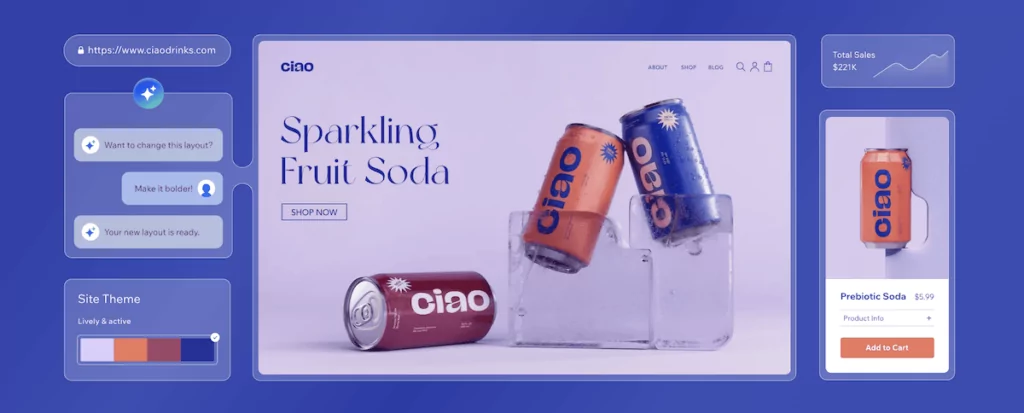
It also offers built-in multilingual capabilities, which promises a straightforward approach that focuses on the user:
- Language flexibility. You can create multiple versions of your site for different languages, and manage it all from the one dashboard. This is great for consistency.
- Automatic translations. Wix offers auto-translate functionality, which can be a time-saver, but you’ll want to review and refine those translations for accuracy and cultural appropriateness.
- Built-in language switching. Like Joomla!, Wix includes an easy-to-implement language switcher.
Wix has enough for a simple site, but we don’t recommend it for any site that wants the best presentation and back-end flexibility. In a nutshell, Wix is a closed source platform, which can be a problem in some areas. For instance, there’s practically no way to migrate your site to another platform. Its site builder and app store are quality though.
Pros
- One of the best drag-and-drop interfaces and builders in my opinion.
- Provides a lot of built-in multilingual features.
- There is a wide range of site templates to choose from.
Cons
- You have limited customization in comparison to other platforms.
- Adding in premium functionality can become expensive.
- I’d prefer to use a more robust and open source solution for anything larger than a small site.
- Multilingual SEO solutions are almost inexistent.
Pricing
Wix offers several pricing tiers, ranging from $17-159 per month. This is an all-in-one site builder, so along with Wix Multilingual, you’ll have all of the capabilities possible. This isn’t near the extensive translation options of other solutions on this list though.
WordPress and TranslatePress—A Winning Combination
While each multilingual CMS I run through here has its strengths, combining WordPress with TranslatePress stands out as an excellent tandem. Both are easy to use, scalable, and flexible to many different needs. WordPress has an excellent feature set, and TranslatePress builds on top to provide ‘best-in-class’ translation, right within the dashboard.
By choosing WordPress and TranslatePress, you get the flexibility and ease of use of the world’s most popular CMS in combination with powerful, user-friendly multilingual capabilities. This lets you create a website that can reach all corners of the globe, without the need for extensive technical knowledge or resources.
What is the key piece of functionality you need your multilingual CMS to do, and can TranslatePress help? I’d love to hear your thoughts in the comments section below!

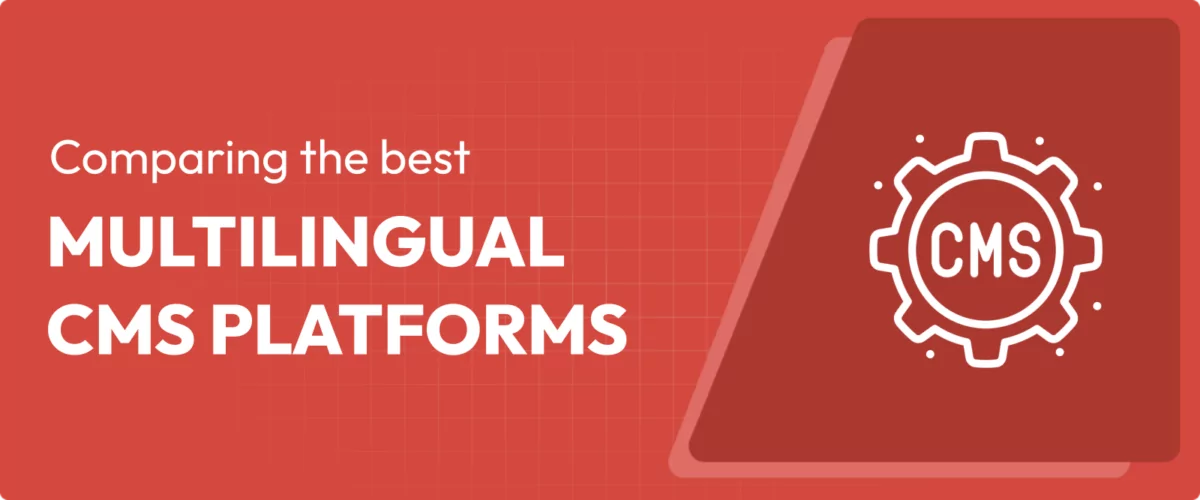

Related Blog Posts